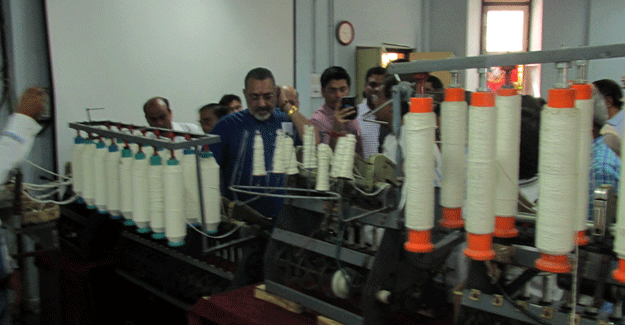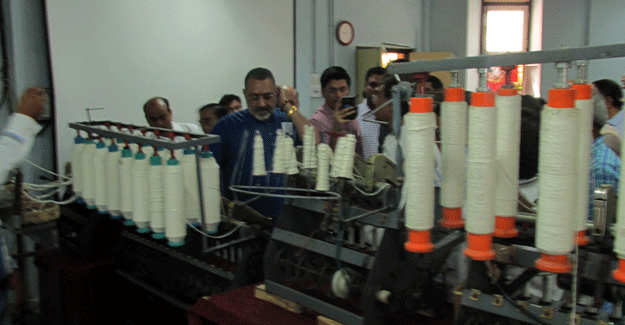
Revitalising Khadi With Solar Energy
With a vision to go back to the roots the present government has decided to spin efficiency and affectivity into the very mechanism of Khadi. In an effort to increase productivity of the khadi manufacturing process with eco-friendly energy sources, the NDA government lead by Prime Minister Modi has given a go-ahead to launch the use of solar energy powered charkhas to spin khadi yarns and market Khadi worldwide as the ‘green fabric of India’.
To realise this initiative, Mahatma Gandhi Institute for Rural Industrialisation (MGIRI) has developed a solar powered charkha - a marvellous innovation which will boost up and vitalise the eco-friendly khadi process even further. The visionary project has been implemented under PMEGP, to assist the artisans with easy funding from reputed institutions. This project will not only help in retaining khadi’s environmental friendly process but also lowers the cost of running charkhas through improved productivity and to empower millions of khadi artisans who are mostly women and from villages.
100 solar charkhas have already been installed at the village Khanwan, in Nurhat taluka of Nawada district in Bihar with the support of MGIRI. The village is adopted by Hon'ble Minister of State Giriraj Singh under Prime Minister Adarsh Gram Yojna. He inaugurated the solar initiative this Republic day and explained how the solar power driven spinning wheels are soon to become excellent employment possibilities. As an estimated 10 persons are engaged in every solar spinning wheel, thus creating 10,000 jobs in a village having 1,000 such charkhas.
“Given the number of villages under the Adarsh Gram Yojana, we should be able to create 70 to 80 lakh jobs in 2016-17,” the minister added. Even though the pilot initiative in Khanwan village was officially inaugurated on January 26 this year, same has been tested since 2009. KVIC has specially worked hand in hand with MGIRI to test run the charkhas at six distinct rural zones of the country over the last couple of years. IIT Delhi was also involved in the testing phase and has proved the effectiveness and the efficiency of the charkhas.
The new-age charkhas have been named nano spinning mills and the MSME ministry's new slogan is "Nano Spinning Mills as the new Charkhas". "The need of the hour is to decentralise production which will thereby create more jobs and make Khadi competitive in terms of reducing the cost of yarn and production," informed Singh.
The ministry has found that even at the experimental stage, the technology has yielded double the productivity at the yarn stage. Manually operated charkhas can produce 20–25 hanks of Nm 40 count yarn whereas solar powered charkhas can produce 45-50 hanks of same yarn count in 8 hours. In terms of weight, solar charkhas can produce 1- 1.25 kgs of yarn in 8 hours which is good enough for 8-10 meters of 44 inch width plain woven handloom fabric. Thus, allowing an earning potential of `6,000-10,000 a month for every household involved in the exercise.

Textile Excellence
If you wish to Subscribe to Textile Excellence Print Edition, kindly fill in the below form and we shall get back to you with details.








